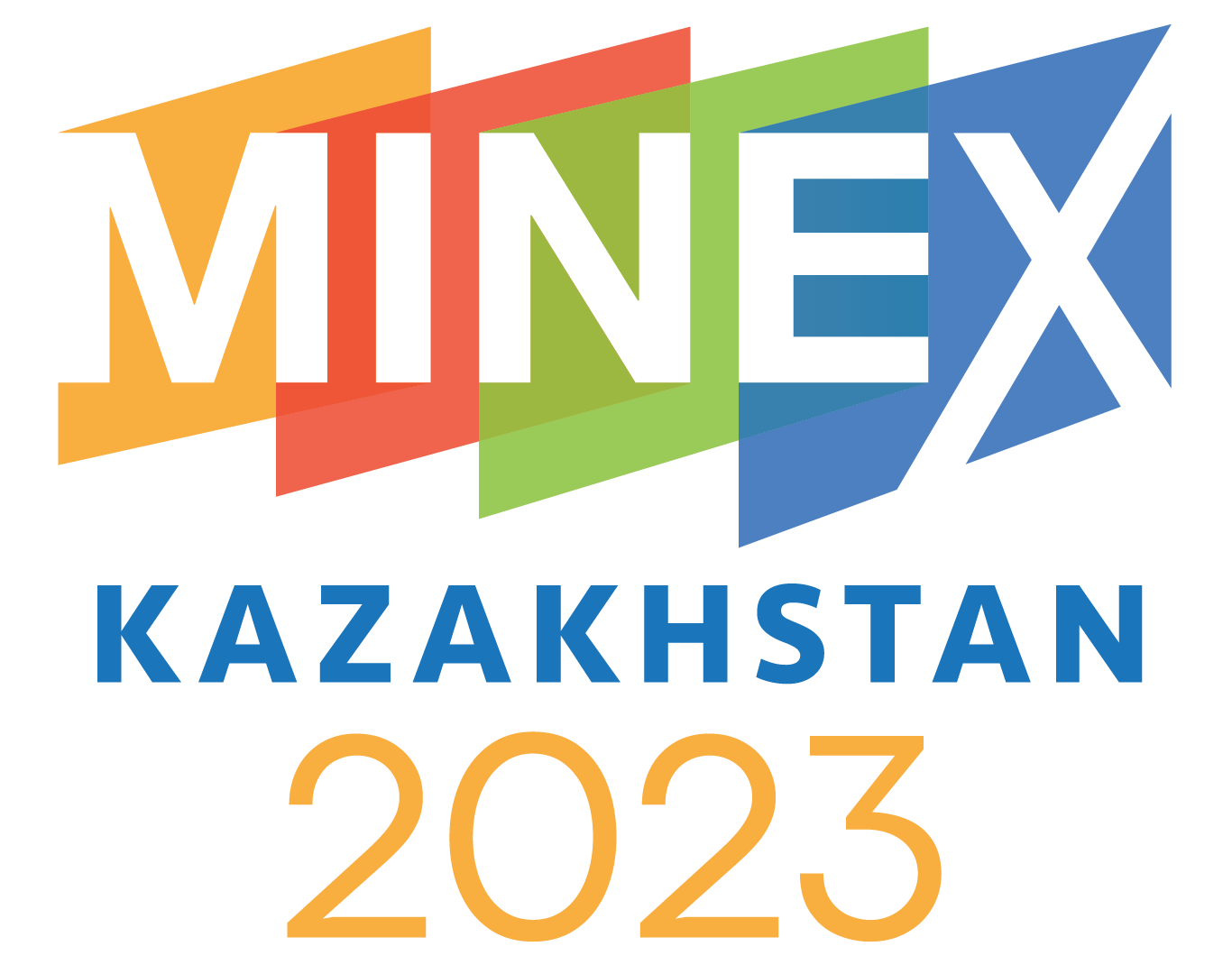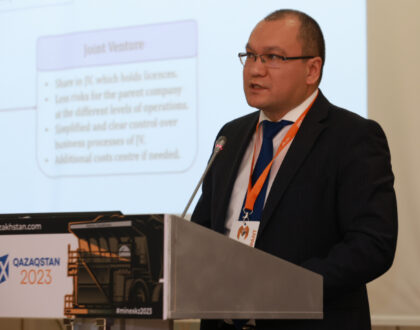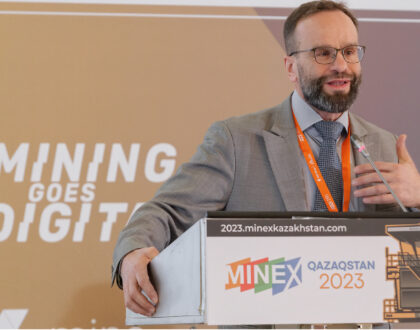Arras Minerals Drills New Gold Zone 3.2 Kilometers From the Main Deposit on the Beskauga Licence, Northeastern Kazakhstan

VANCOUVER, British Columbia, March 06, 2023 (GLOBE NEWSWIRE) — Arras Minerals Corp. (TSX-V: ARK) is pleased to announce the assay results from holes Bg21011 and Bg21013, which were drilled 3.2 kilometers south of the main deposit on the “Beskauga South” prospect. These drill results are from the ongoing exploration drill program at the Beskauga copper-gold deposit and surrounding area.
Highlights Include:
- Hole Bg22013 returned intersection of 877.4 meters (“m”) of mineralization grading 0.27 gram per ton (“g/t”) gold-equivalent (“AuEq”) (0.24 g/t Au, & 0.24 g/t Ag) starting at 21.3 m to the end of the drill hole.
- Including 6.3 m grading 1.29g/t AuEq (1.18 g/t Au & 0.41 g/t Ag) from 794.7 m depth down-hole.
- Including 17.0 m grading 2.53g/t AuEq (2.49 g/t Au & 0.41 g/t Ag) from 604.0 m depth down-hole.
- Including 23.0 m grading 1.68g/t AuEq (1.56 g/t Au & 0.70 g/t Ag) from 554.0 m depth down-hole.
- Including 82.7 m grading 0.53g/t AuEq (0.51 g/t Au & 0.21 g/t Ag) from 21.3 m depth down-hole.
- Hole Bg22011 returned intersection of 423.4 meters (“m”) of mineralization grading 0.24 gram per ton (“g/t”) gold-equivalent (“AuEq”) (0.22 g/t Au & 0.19 g/t Ag) starting at 26.7 m to the end of the drill hole.
- Including 129.0 m grading 0.57g/t AuEq (0.55 g/t Au, 0.37 g/t Ag) from 96.0 m depth down-hole.
Tim Barry, CEO of Arras, commenting on these latest results, stated, “Holes Bg22011 and Bg22013 were designed to test historical gold and copper anomalies within a NW-SE corridor on the margin of the magnetic high and demagnetized zone 3.2 kilometers from the Beskauga Main Deposit. They were also intended to test for lateral and depth continuity of gold intercepts in historical drill holes BgS-043 and BgS-060, which yielded 86.5m @ 1.32 g/t Au and 60m @ 1.04 g/t Au, respectively.”
Mr. Barry continues, “These are the first holes we have drilled into the Beskauga South prospect and they are particularly pleasing. Continuous low grade gold intercepts are punctuated by zones of higher grade including 17 meters @ 2.48g/t gold and 23 meters @ 1.68g/t gold. To drill such significant intercepts in our first drill holes in this area and to be more than 3 kilometers south of Beskauga Main Deposit speaks to the size and strength of the mineralizing system we see at Beskauga.”
A summary of the results announced in this news release is outlined in the table below.
Table 1. Summary table for drill holes Bg22011 and Bg22013

Notes: Copper Equivalent (“CuEq”) grades reported for the drill holes at Beskauga were calculated using the following formula: CuEq % = Copper (%) + (Gold (g/t) x 0.8264) + (Silver (g/t) x 0.0107) + (Molybdenum (ppm) x 3.3333). Gold Equivalent (“AuEq”) grades reported for the drill holes at Beskauga were calculated using the following formula: AuEq g/t = Gold (g/t) + (Copper (%) x 1.2100) + (Silver (g/t) x 0.0129) + (Molybdenum (ppm) x 4.0334). Assumptions used for the copper and gold equivalent calculations were metal prices of US$3.00/lb. Copper, US$1,700/oz Gold, US$22/oz Silver, US$10/lb. Molybdenum, and metallurgical recoveries were assumed to be 100%.
A summary of drillholes is given below:
Bg22011: The upper section of the drill hole passed through andesite basalt and porphyritic quartz monzonite before intersecting later equigranular quartz monzonite. Both the porphyritic and equigranular quartz monzonites show weak to moderate potassic alteration, characterized by the presence of K-feldspar, magnetite, biotite, and epidote. The local argillic overprint, consisting of Illite and smectite, is strongly controlled by fault zones and correlates with low magnetic susceptibility values in the drill core. Gold mineralization is associated with occasional quartz-pyrite and quartz-magnetite veins, as well as magnetite and pyrite-only veins. Chalcopyrite is rare and weakly present. The most significant mineralization is found at the contact zones of quartz monzonite and surrounding rocks and is controlled by structures. The last 70m of the drill hole intersected fresh and barren andesite basalt.
Bg22013: intersected alternating intervals of equigranular quartz monzonite intruded into a porphyritic quartz monzonite, with andesite basalts reported in three intervals indicating an older volcanic event. Alteration zones include moderate propylitic and weak to moderate potassic alteration. Strongest mineralization is related to contact zones of quartz monzonite and surrounding rocks, with gold mineralization associated with weak quartz-pyrite and quartz-magnetite veining, occasional magnetite, and pyrite only veins and stringers, or hematite after magnetite and pyrite veins in zones of argillic overprint. Chalcopyrite is sporadic with weak intensity.
Figure 1. Location of the holes completed to date at the Beskauga South area, located approximately 3.2 kilometers SSW from the Beskauga Main deposit, and outside of the current NI-43-101 Mineral Resource Estimate. The inset map shows the location of Beskauga. Also shown is the location of the geology section shown in Figure 2.
Figure 2. Cross-section showing drill holes Bg22011 and Bg22013 in relation to historical holes drilled by Copperbelt. AuEq grades of key intercepts in Bg22011, Bg22013 and historical holes are shown. The cross-section demonstrates structurally controlled mineralization largely focused in the contacts between steep, southwest dipping quartz monzonite intrusion and surrounding porphyritic quartz monzonite and andesite basalts.
About the Beskauga Deposit
The Beskauga deposit is a gold-copper-silver deposit with an “Indicated” Mineral Resource of 111.2 million tonnes grading 0.49 g/t gold, 0.30% copper, and 1.3 g/t silver for 1.75 million ounces of contained gold, 333.6 thousand tonnes of contained copper, and 4.79 million ounces of contained silver and an “Inferred” Mineral Resource of 92.6 million tonnes grading 0.50 g/t gold, 0.24% copper and 1.1 g/t silver for 1.49 million ounces of contained gold, 222.2 thousand tonnes of contained copper, and 3.39 million ounces of contained silver. The constraining open pit was optimized and calculated using a Gross Metal Value (“GMV”) cut-off of $20/tonne based on a price of $1,750/oz for gold, $3.50/lb for copper, $22/oz for silver, and with an average recovery of 85% for copper and 74.5% for gold and 50.0% for silver.
Assay and QAQC Procedures
The drill core is cut in half lengthwise with one half (same half, consistently) collected for analysis, and one half preserved as a record. Bagged samples are sealed to ensure integrity during transport.
All sample preparation and geochemical analysis are undertaken by ALS Global at its laboratories in Karaganda (Kazakhstan) and Loughrea (Republic of Ireland), respectively.
A 30 g split of the pulp is analyzed for gold content by fire assay with an Atomic Absorption Spectroscopy (AAS) finish (ALS method: Au-AA25™) at ALS Karaganda. A second pulp split is then air freighted to ALS Loughrea and analyzed for 48 elements by Inductively Coupled Plasma Mass Spectrometry (ICP-MS) after four-acid digestion on a 0.25 g aliquot (ALS method: ME-MS61™). Any samples exceeding 1% copper are re-analyzed using a 4-acid digest ICP-MS ore grade method (ALS method: Cu-OG62™).
Arras Minerals operates according to its rigorous internal Quality Assurance and Quality Control (QA/QC) protocols, which are consistent with industry best practices. This includes the insertion of certified standards, blanks, and field duplicates comprising of quarter drill core into the sample stream at an insertion rate of 2.5%, 2.5%, and 5%, respectively, which is deemed appropriate for this stage of exploration. The blanks and standards are Certified Reference Materials (CRM’s) supplied by Ore Research and Exploration, Australia.
Internal QA/QC samples are also inserted by the analytical laboratories and reviewed by the Company prior to release.



